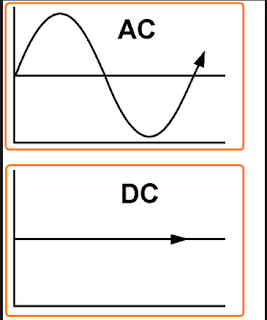Malaysia
merupakan antara negara pengeluar utama getah asli di dunia. Selain dari pada mengeluarkan getah asli, Malaysia juga telah berjaya menghasilkan produk-produk
bermutu daripada getah seperti sarung tangan, tayar dan sebagainya. Menurut
ASTM D1566-90 (1990), getah ditakrifkan sebagai bahan yang berupaya pulih apabila
tekanan dikenakan kepadanya. Getah tidak larut tetapi boleh berubah apabila
dicampurkan ke dalam pelarut seperti benzene dan metil etil keton.
Getah ini boleh
dibahagikan kepada dua jenis iaitu getah asli dan getah sintetik (Hanafi 2004).
Elastomer yang utama adalah getah asli. Getah asli merupakan suatu polimer
hidrokarbon linear yang terdiri dari unit-unit isoprena (Ibrahim et al. 1995).
Ia terdiri daripada unit-unit ulangan isoprena yang disusun secara kepala ke
ekor (Brydson 1978). Getah asli (NR)
diperolehi dalam bentuk cecair likat yang dikenali sebagai lateks dan struktur
rantaian polimernya ialah cis-1,4 poliisoprena (Mustaffa 1991). Cis-1,4 poliisoprena
ialah satu rantaian panjang yang mempunyai berat molekul purata lebih kurang 5
x 10^5 g/mol. Lateks atau
cis-1,4 poliisoprena dengan kumpulan sisi – CH3- ditempatkan hanya pada satu bahagian rantai polimer. Indek
1,4 menunjukkan unit-unit kimia yang berulangan pada atom karbon yang pertama
dan keempat ikatan kovalen rantai polimer.
Getah asli termoplastik (TPNR)
merupakan bahan termoplastik yang disediakan melalui pengadunan getah asli dan
bahan poliolefin. Terdapat
dua kumpulan bahan-bahan plastik iaitu termoplastik dan termoset. Kedua-dua
jenis plastik ini mempunyai sifat-sifat yang istimewa dan sering digunakan
secara meluas dalam bidang industri. Bahan-bahan termoplastik boleh dilentur,
dilembutkan dan boleh diproses berulang kali dengan mengenakan proses pemanasan
dan tekanan. Daya antara rantaian molekul ini adalah daya van der waals yang
lemah. Oleh itu, dengan mudahnya haba akan melemahkan daya di antara molekul
dan menyebabkan bahan termoplastik menjadi lembut semula.
Getah asli termoplastik (TPNR) disediakan dengan pengadunan getah asli
dengan poliolefin seperti polipropena (PP) dan polietilina (PE) (Ibrahim et al.
1995). Para penyelidik banyak melakukan penyelidikan bagi getah asli
termoplastik dengan pelbagai getah asli dan poliolefin seperti NR/HDPE, NR/LDPE
dan NR/PP (Sahrim et al. 1994). Mengikut kajian yang telah dijalankan oleh
Sahrim et al. (1994) mendapati bahawa sifat-sifat mekanik yang baik dapat
dihasilkan dengan komposisi NR/HDPE : 60/40.
Getah asli termoplastik dijangka dapat bersaing dalam pasaran getah
kerana getah asli termoplastik mempunyai banyak kelebihan seperti (Elliot
1987):
i. Kos pengeluaran yang rendah berbanding getah pemvulkanan.
ii. Mempunyai
kerintangan terhadap larutan asid, bes dan garam.
iii. Harga
yang lebih rendah berbanding poliuretana.
iv. Bahan
serpihan yang boleh diproses semula.
v. Mempunyai
kebolehan untuk melentur pada suhu rendah
RUJUKAN
ASTM D1566. 1990. American Society for
Testing and Materials. Philadelphia, PA.
Brydson, J.A. 1978. Rubber chemistry,
London. Applied Science. Publisher Ltd.
Elliot, D.J. 1987.
Commercial prospects of thermoplastic natural rubber Malaysian Rubber Producers Research Association, Hertford, United
Kingdom.
Hanafi, I. 2004. Komposit polimer diperkuat pengisi dan
gentian pendek semula jadi. Pulau Pinang: Penerbit Universiti Sains
Malaysia.
Ibrahim, A.,
Sahrim, A. & Che Som, S. 1995. Blending of natural rubber with linear
low-density polyethylene. Journal Applied Polymer Science 58: 1125-1133.
Mustaffa Hj
Abdullah. 1991. Sains Bahan Jilid 1. Kuala Lumpur: Dewan Bahasa dan
Pustaka.
.Sahrim, A.,
Ibrahim, A., Che Som, S., Kohiya, S. & Yoon, S.R. 1994. Natural rubber-HDPE
blends with liquid natural rubber as a compatilizer. I. Thermal and mechanical
properties. Journal Applied Polymer Science 51: 1357-1363.
Disediakan oleh:
Nurul Huda Kamarulzaman



















